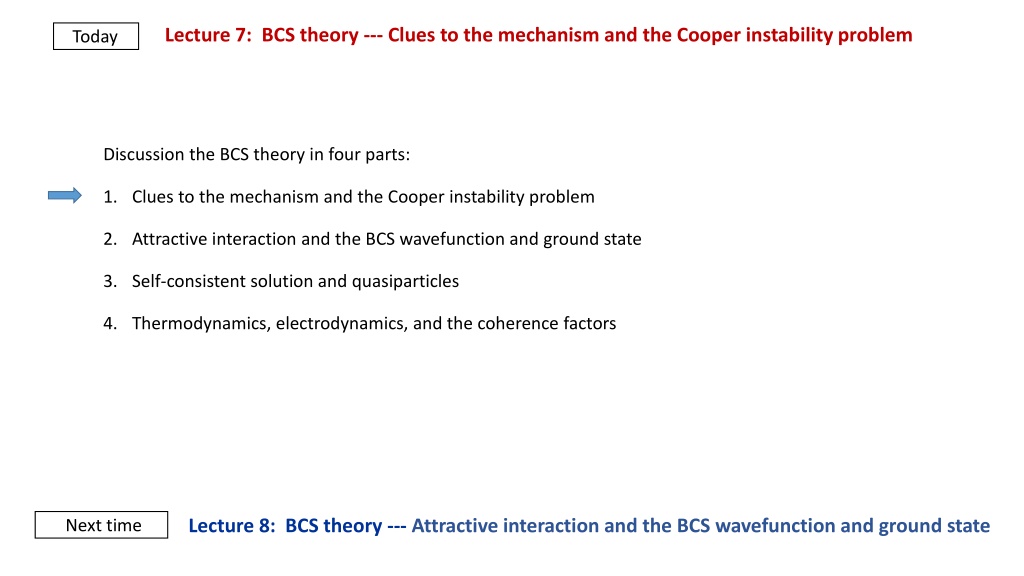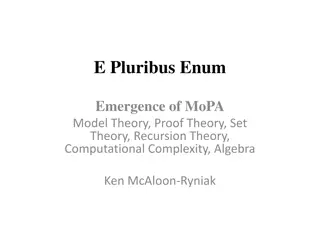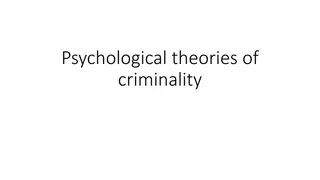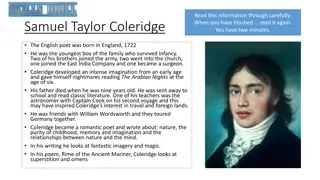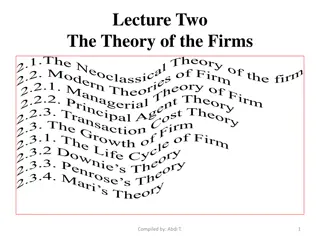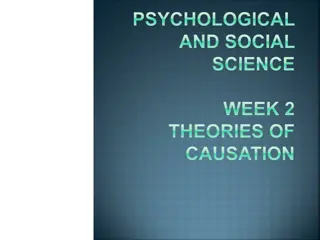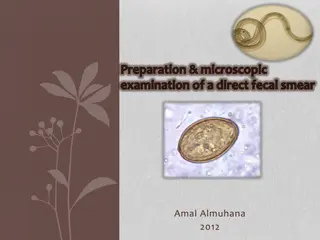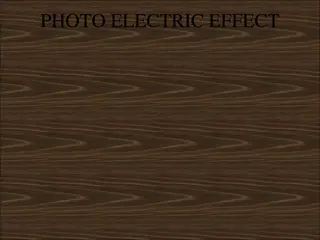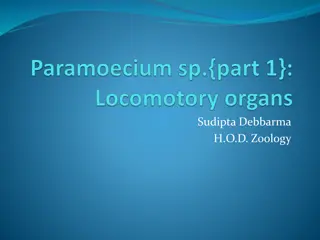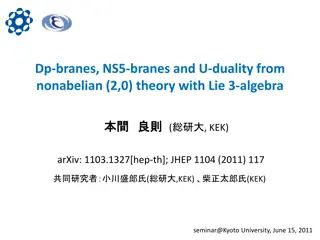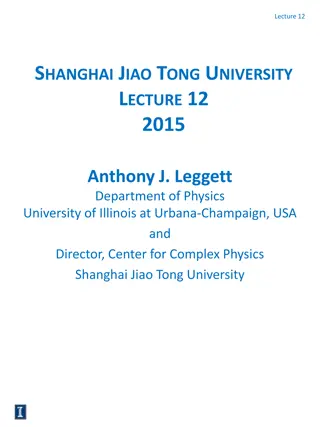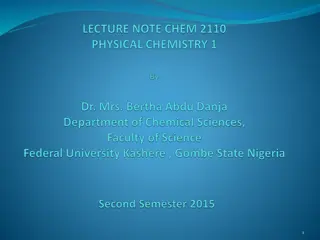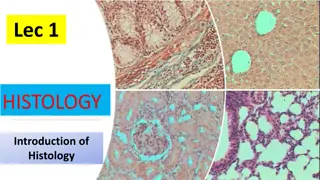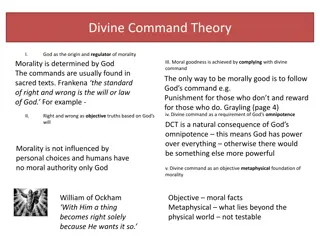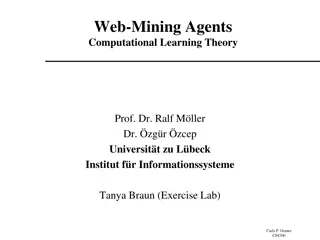Unveiling Microscopic Origins of BCS Theory
The discussion delves into the microscopic clues leading to the BCS theory, including phase transitions, energy gap observation, and electromagnetic absorption analyses. These clues provide insights into long-range order, quasiparticles, and the Cooper instability problem.
Download Presentation

Please find below an Image/Link to download the presentation.
The content on the website is provided AS IS for your information and personal use only. It may not be sold, licensed, or shared on other websites without obtaining consent from the author. Download presentation by click this link. If you encounter any issues during the download, it is possible that the publisher has removed the file from their server.
E N D
Presentation Transcript
Lecture 7: BCS theory --- Clues to the mechanism and the Cooper instability problem Today Discussion the BCS theory in four parts: 1. Clues to the mechanism and the Cooper instability problem 2. Attractive interaction and the BCS wavefunction and ground state 3. Self-consistent solution and quasiparticles 4. Thermodynamics, electrodynamics, and the coherence factors Lecture 8: BCS theory --- Attractive interaction and the BCS wavefunction and ground state Next time
Microscopic Clues Things seemed to be understood thermodynamically trend was to make up phenomenological theories and study thermal and electrodynamical properties 1930 1950 But, clues to the microscopic origins emerged that ultimately led to the microscopic BCS model (1) Phase Transitions ? 1 8? ??2 ?? = ?? ??= ?? = (cgs) condensation energy 1 2?0??2 = (MKS) ?? ? ?? ~ 100 ?/? = 10 2 ?/? Type I SC: 10 4 ?2 2 4? 10 7?/? = 102 ?/?3= 1021 ?? ?3 = 1015 ?? ??3 For : ??= 1? ??= ?? ~ 10 7 1022??3 ?? ???????? ? = Very small energy per electron - or - few electrons involved 10 4 ?? ~ 10 ?? Compare to Fermi energy ???? ~ 10 3 ?? and thermal energy
(2) Existence of an Energy Gap of the charge carriers 1st clue: Absence of thermoelectric effects --- Daunt & Mendelsohn (1946) 2nd clue: Low temperature specific heat --- Satterwaithe (1950) at UIUC Jump of x 2-3 in specific heat ~?3 ?? ~ ?? + ??3 electrons lattice ?? ? No latent heat 2nd order phase transition 1st derivative of ? is discontinuous ~ ? ? ??? ? Low ?- fit to ? ? ??? ? 1.5 Later we will see that BCS predicts: Implies existence of energy gap must excite excitations above gap ~1.76 ???? Boltzman factor: ? ~1.5 ???? ???
3rd clue: Electromagnetic absorption Tinkham (Beasley, Ginsberg UIUC) REFLECTIVITY (far-infrared and microwaves) which depends on surface impedance Reflectivity changes above a given frequency --- attribute to an energy gap ~ ? ~???? ?? ? ? Details depend on ?? - supercurrent screening ?? - quasiparticles ? - coherence factors (selection rules) ? =2 3 G/G(eV>> ) 2 4th clue: Quasiparticle tunneling (Giaever) tunneling spectroscopy 1 MOST DEFINITIVE EVIDENCE 0 -3 -2 -1 0 1 2 3 eV/
impurity dependence of ?? properties frequency dependence (screening length) (3) Non-local effects implies long-range order (4) Isotope effect ??? = ???????? ? =1 2 ? ??? non transition metals 1st experiment: Kamerlingh Onnes 1922 ? ?? dependence of ?? on isotope mass ions, phonons involved in the superconducting mechanism Important clue but not definitive --- not seen is all superconductors (even conventional ones) Weakly observed in some HTSC superconductors that are not thought to be conventional BCS superconductors ????: 16? 18? ? = 0 0.05
Microscopic Theory BCS - 1957 Pre- BCS: (1) Perfect Conductivity (2) Meissner Effect (3) Second order transition small energy scale of 10 7 ?? ???????? electrons involved (4) Energy Gap ~???? (5) Does not occur in best metals phonons involved (6) Isotope effect - ?? ? Steps in the development of a microscopic theory: 1950 Fr lich Nature of attractive electron-phonon interactions (refined by Bardeen, Pines UIUC) 1956 Cooper Mechanism to get phase transition from electron-phonon coupling Full theory of wavefunction SC properties 1957 BCS
Attractive force new state Cooper Instability Problem (1956) k T B NORMAL STATE ( T = , k k ~ E kf F ) 0 k 1 1 k T 1 = = f = k T k Occupational probability = k T k k k k k + + 1 1 + e e 1 e B B B Add two electrons-interacting with each other E E 1 k 2 k SUPERCONDUCTING STATE 2 2 E Normal State: F (normal state unstable) F E Will find that = = 0 k k k k = Expect ground state to be zero momentum 1 2 ) ( ik r r ( ) ( ) k k e 1 2 = ~ where = + = H H V r r a r r 1 2 k 0 1 2 1 2 k k k k is the spin state and F
singlet (asymmetric) symmetric Wavefunction contains a mixture of symmetric and antisymmetric spatial wave functions ( ) cos k r r 1 2 = Overall state must be antisymmetric with exchange due to Fermi statistics ( ) + , , sin k r r 1 2 asymmetric triplet (symmetric) Assume singlet spin symmetric spatial wave function particles close together to take advantage of attraction = + = = H H V r E , a k k o k k k f ', ' k k x ( ) + = ' ' ' ' ' ' , , , , , , a k k H k k k k V r k k E k k k E k o k k k ) ( 1 r ( ) ' i k k r = 2 k V V r e dr ' kk ' ' kk kk = ( ) 2 a E V a ' ' k k k ' kk k
Coopers attractive interaction 'k = 0 0 for , k k c ' k k k = V Cooper approximation : ' for 0 , V kk k c ' k C D V Debye energy constant k = ( ) 2 a E V a ' ' k k k ' kk 'k k ( ) = 2 E a V a k ' ' k k k ( ) ring V = a a k ' 2 k E k ' k V = a a k ' 2 k E ' ' ' k k k ' k V = 1 2 E k k Defines E in terms of V
Evaluate by connecting sum to an integral ( ) N ( ) N d E k F + 2 2 E 1 2 E E w V + ( ) 0 E ( ) 0 = = F c N n F c 1 V N d 2 E 2 E E F F 3 2 3 2 n V E ( ) 0 ( ) 0 = = N N V n E F F 2 ( ) 0 ( ) 0 N V 1: N V = For 2 2 2 E E e E E weak coupling F c F B 2 0, 0, 2 E V V E E E (normal state) ( ) 0 N V = F 2 E e binding energy B c 2 (superconducting state) F The normal metallic ground state is unstable to excitations for any attractive interaction we can excite two electrons from the Fermi sphere and let them scatter into many available states lower energy state (SC)
Lets look at what this calculation means: (1) Not analytic at V=0 no power series expansion in (V/EF) so it is not possible treat this in perturbation theory (2) Attractive interaction lower energy state available Repulsive interaction only gives higher energy states Mixed interaction depends on the strength and spatial dependence of the potential (3) This is for one excited pair, but if it works for one pair, why not more? Two consequences of exciting a pair: Cost of energy ~ ?? (to raise ??) increase as states fill up need to reach deeper into Fermi sphere shrinks as states near EFfill up and there are less states available states to scatter into Gain of energy ~ ?? (to take advantage of ?) ?? ?? There is a tradeoff between number of electrons excited and number of scattering states available reach a point of diminishing return
(4) The phenomenon requires a Fermi surface Fermi sphere + 2 electrons ?? 0 2 electrons ? Consider the integral relation we derived ? ( ) 1 = = 1 V N d 2 E E E 2 E ? ? F B ? ? ( ) 1 E = = V N d E ( ) + F 2 E B ??< 0 ??> 0 ( V 1 + ? ? = + ) N E d 0 2 E ?? F B ( , V = ) E d For EB=0, Integral(EB) is finite If V is too small, can t get to 1 so no superconductivity For EB=0, Integral(EB) For any V, can get 1 with EB<0 so always superconductivity B = Integral(E ) V B ( ) 1 + ( ) = N E where 2 E F B Presence of filled Fermi sphere is essential to get lower energy state (Pauli exclusion principle) Why? creates many available states for ? band of energy
(5) We can estimate condensation energy ??=1 ? 0 2 ?? ?? ~1 2? 0 2 BCS: 2 ??~ 2? 0 ?? Number of pairs excited Energy gain per pair excited (6) Note that choice of ?? is not critical since when ??~ ??, consequence on system energy is small ?? ??? (7) Justifies Pippard s idea that ? ~ ?? ~ ???? so that size ~ ?0 ~
Cooper Instability c Attractive for ??< ?? E 2 ? 0 ? k F (? 0 ? 1) ??= 2 ?? ? k weak coupling Need filled FS to get lots of available states for scattering Next time: (1) Details of the attractive interaction Ground state band of scattering states of energy width ~ ??around Fermi surface (2) Nature of SC ground state (if N unstable) (3) ??? wavefunction
